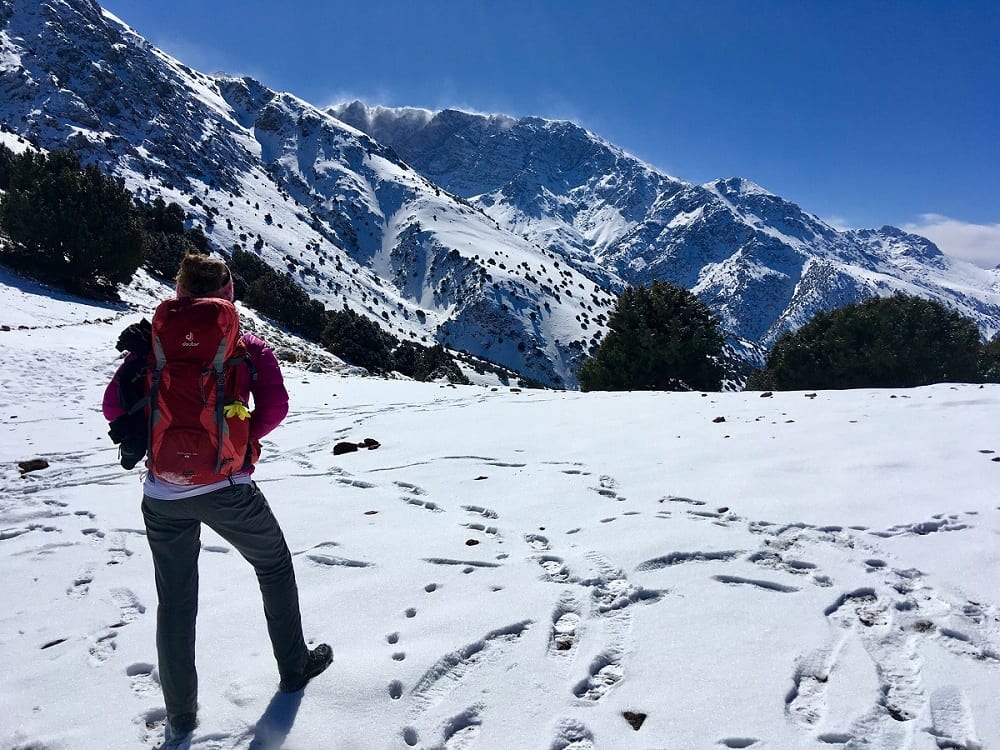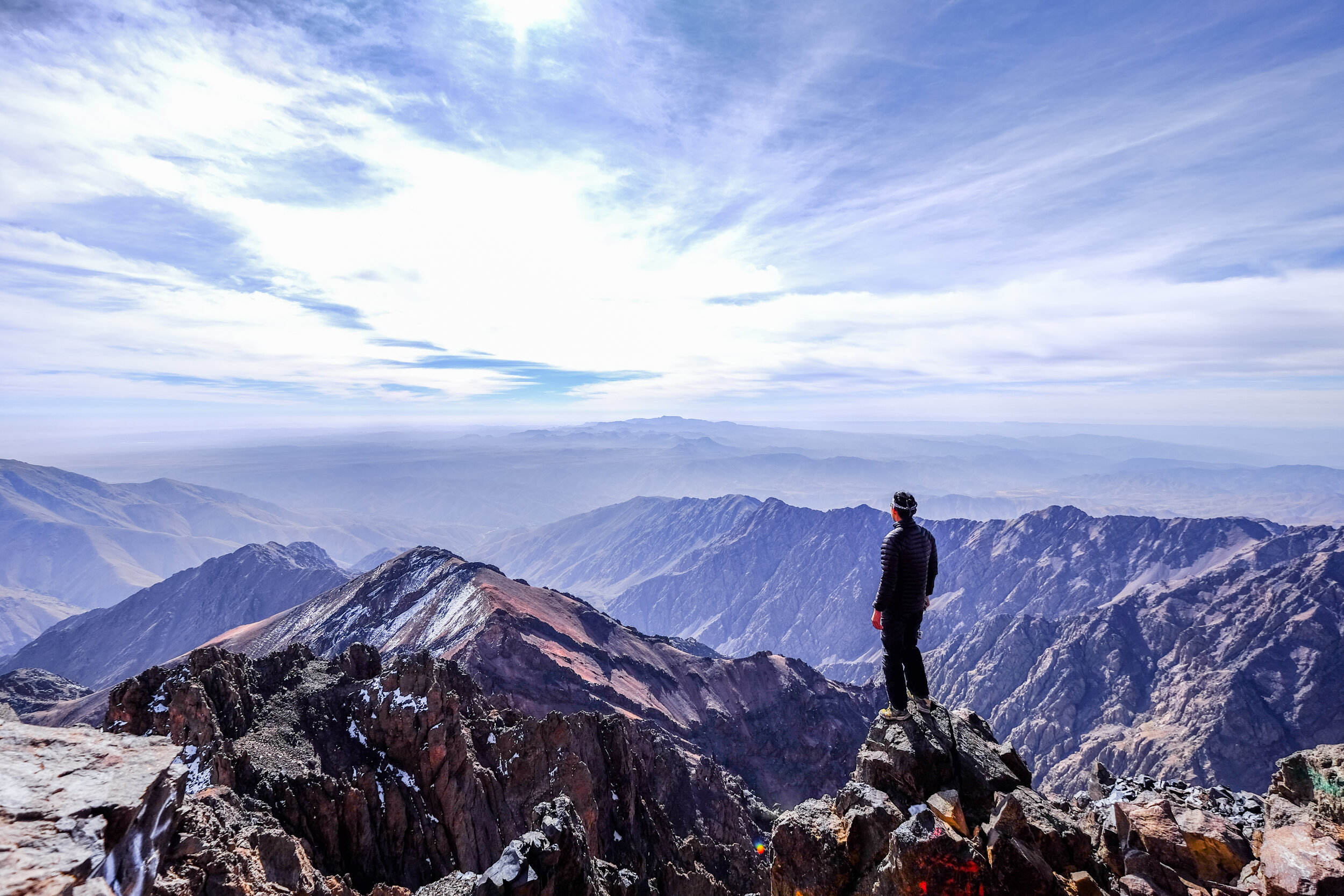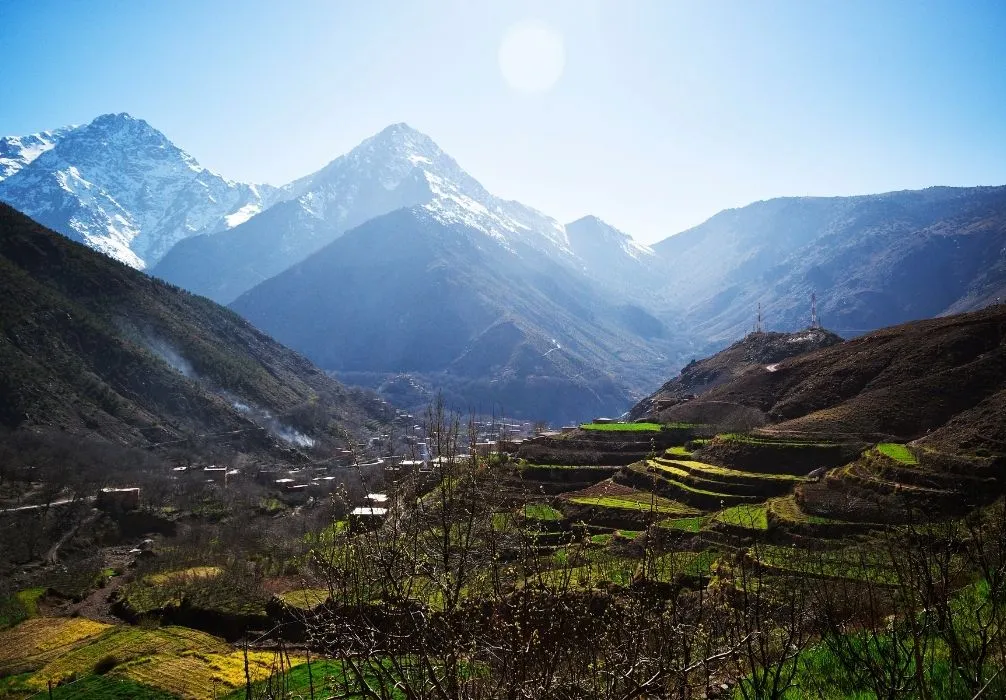Exploring the Atlas Mountains: Your Guide to Trekking Adventures
Getting to Know the Atlas Mountains
The Atlas Mountains are an incredible mountain range that stretches over 2,500 kilometers. If you love adventure and the great outdoors, this is the place for you. Located in Morocco, these mountains offer a mix of rugged peaks and quiet valleys that will leave you in awe. Picture yourself standing amid towering mountains that are steeped in cultural and natural beauty.
Table of Contents
Why the Atlas Mountains Matter
The Atlas Mountains aren’t just beautiful; they play an important part in Morocco’s environment and weather. Here are some key points:
- Three Distinct Ranges: You’ll find the High Atlas, Anti-Atlas, and Middle Atlas, each with its own unique landscapes and attractions.
- Natural Barriers: These mountains create a microclimate that supports a wide variety of plants and animals.
- Cultural Melting Pot: The mountains link the Mediterranean and Sahara regions, bringing together Berber, Arab, and French influences.
Climate and Weather Insights
The climate in the Atlas Mountains is pretty unique. Here’s what you can expect:
- Hot Summers: Temperatures can soar above 30°C (86°F).
- Cold Winters: At higher elevations, it can get seriously chilly, often below freezing.
- Rainy Seasons: Spring and autumn bring refreshing rain that makes the landscape lush and green.
Understanding the climate will help you figure out what to pack and when to visit!
Planning Your Trek
When’s the Best Time to Visit?
Timing your trek is crucial! The best seasons to explore are spring (March to May) and fall (September to November). The weather during these months is comfortable, allowing you to soak in the stunning views.
- Spring: The mountains come alive with blooming flowers, turning everything into a colorful paradise.
- Autumn: Clear skies and changing leaves provide a view that will take your breath away.
Know the Rules and Permits
Before you head out, it’s good to know about permits and regulations:
- Typically No Permits Required: Most trekking routes don’t need permits, but always check specific trail requirements if you’re aiming for higher elevations.
- Respect Local Customs: Being mindful of local traditions is essential.
What to Pack for Your Trek
Smart packing can improve your trekking experience. Here’s a handy checklist:
- Footwear: Invest in sturdy trekking boots for the best support.
- Clothing: Layer up for changing temperatures.
- Navigation Tools: Bring maps and a compass or GPS for safety.
- Hydration: Keep water bottles or a hydration system handy.
- First Aid Kit: Always good to have basics for minor issues.
With the right prep, you’ll be ready for the awe-inspiring Atlas Mountains! Adventure is waiting for you, and every step can lead to amazing experiences!

Source image: www.expeditionwildlife.com
Choosing Your Trekking Route
Popular Treks You Shouldn’t Miss
As you get ready for your Atlas adventure, selecting the right route is key for a memorable experience. Here are some favorites:
- Toubkal Circuit: A challenging trek to the highest peak in North Africa, Mount Toubkal.
- Imlil to Aremd: Scenic paths lead through lush valleys and traditional Berber villages.
- Valley of the Roses: A paradise for those who enjoy beautiful landscapes full of roses.
Difficulty and Duration
When deciding on a route, think about how tough it is and how long it’ll take:
- Easy: Imlil to Aremd (Approx. 5-6 hours) – Perfect for newbies.
- Moderate: Ait Bouguemez Valley (Approx. 7-8 hours) – Stunning views and some challenging spots.
- Difficult: Toubkal Summit (Approx. 2 days) – For those looking for a real adventure!
Activities In Marrakech
Day Trips From Marrakech
Desert Tours From Marrakech
Scenic Views Along the Way
Every trekking path in the Atlas Mountains reveals stunning views you won’t want to miss:
- Breathtaking Vistas: Panoramic sights from Toubkal’s summit.
- Culture and Tradition: Dive into Berber culture in Aremd and Imlil.
- Flora and Fauna: Keep an eye out for local wildlife and beautiful plant life.
With so many stunning trails, there’s something for everyone in the Atlas Mountains!

Source: cdn.getyourguide.com
Getting Ready Physically and Mentally
Getting Fit for Your Trek
Being in shape when you tackle the Atlas Mountains is super important! Work on endurance and strength with these tips:
- Cardio: Try hiking, running, or cycling 3 times a week.
- Strength Training: Focus on leg muscles and core stability with moves like squats and lunges.
- Flexibility: Don’t forget to stretch to prevent injuries.
Mental Prep
A great trek is just as much about being mentally prepared. Here are some ideas:
- Visualization: Picture yourself reaching your goals.
- Mindfulness: Use meditation or deep breathing to chill out.
- Set Goals: Break your journey into smaller milestones to stay motivated.
Getting Used to High Altitude
When trekking, it’s essential to think about altitude too:
- Acclimatization: Spend a day or two at higher altitudes to let your body adjust.
- Stay Hydrated: Drink lots of water to prevent dehydration.
- Pace Yourself: Start slow to give your body time to adapt.
With both mental and physical prep, you’ll hit the trails ready to take on the amazing Atlas Mountains!

Source: images.squarespace-cdn.com
Accommodations and Facilities
Where to Stay
When you’re trekking the Atlas Mountains, choosing the right place to stay can enhance your experience. Here are some options:
- Mountain Huts: Basic but cozy huts that give you a comfortable spot to rest.
- Traditional Guesthouses: Experience genuine Berber hospitality with tasty home-cooked meals.
- Hotels: In places like Imlil, you’ll find charming hotels with modern comforts.
Camping Options
If you love nature, camping is a great idea:
- Camping: Set up your tent and drift off under the stars along well-trafficked routes.
- Glamping: Fancy some comfort? Look for glamping spots with nice tents and comfy beds.
Facilities on the Trails
You’ll find helpful facilities on your trekking routes:
- Water Sources: Many paths have access to spring water, but bring purification tablets just in case.
- Rest Stops: Look for areas where you can take a breather.
- Guides and Porters: Hiring local guides can increase safety and support the community.
Knowing your options will let you plan a fantastic trip on the trails!

Source: www.journalofnomads.com
Staying Safe on the Trail
Why Safety is Key
Safety is super important when trekking in the Atlas Mountains. Proper precautions can be the difference between a fun adventure and a dangerous situation. Keep these safety tips in mind:
- Stay Informed: Research your route and know what you’re getting into.
- Travel in Groups: There’s strength in numbers, so trekking with friends is always a good idea.
- Listen to Your Body: Know when to take a break or turn back to avoid burnout or altitude sickness.
Emergency Contacts
Have a plan for emergencies:
- Emergency Contacts: Keep a list of local emergency numbers like park rangers or medical services.
- Navigation Tools: Don’t forget a reliable GPS device and physical maps.
- Mobile Communication: Make sure your phone is charged and consider a satellite phone for remote areas.
First Aid Tips
Being ready for minor injuries is crucial:
- First Aid Kit: Pack items like band-aids, antiseptic wipes, and pain relievers.
- Know Basic First Aid: Familiarize yourself with how to handle sprains and altitude sickness for quick help if needed.
Taking these safety measures lets you enjoy the stunning Atlas Mountains while being ready for anything that comes your way!

Source: www.adrartravel.com
Cultural Connections
Dive into Berber Culture
While trekking the Atlas Mountains, you’ll get to experience the vibrant Berber culture. Enjoy unique activities like:
- Traditional Music: Join local gatherings for traditional Berber tunes.
- Cooking Classes: Learn to whip up famous dishes like tagine or couscous.
- Storytelling Evenings: Connect with locals in the evenings as they share fascinating stories.
Meet Local Communities
Connecting with local communities enriches your experience:
- Village Visits: Stop by Berber villages and interact with friendly locals, getting a taste of their daily lives.
- Market Trips: Explore local markets to buy crafts and fresh foods, supporting the community.
Being a Responsible Traveler
As a responsible tourist, remember your actions matter. Here are some best practices for sustainable tourism:
- Respect Local Customs: Be mindful of traditions and always ask before snapping photos of people.
- Leave No Trace: Dispose of trash properly and keep the beautiful environment clean.
- Support Local Businesses: Eat at local eateries and hire local guides to support the economy.
Engaging with Berber culture and practicing responsible tourism not only enriches your trip but also positively impacts the communities you visit in the Atlas Mountains!
Discovering Wildlife and Flora
Rich Biodiversity
As you explore the Atlas Mountains, prepare to be blown away by the variety of plants and animals that call this region home. There are many ecosystems, from lush valleys to rocky peaks. Some highlights are:
- Vast Vegetation: The mountains are home to oak forests, alpine meadows, and bright wildflowers.
- Diverse Wildlife: Keep an eye out for Barbary macaques, golden eagles, and various reptiles.
Conservation Efforts
Sadly, some species in the Atlas Mountains are endangered. Here’s how they’re being protected:
- Barbary Macaques: These cute primates are facing habitat loss, and local groups are working on conservation programs.
- Community Engagement: Getting locals involved in conservation education is key to protecting these species.
Botanical Beauty
While trekking, you’ll encounter a fantastic variety of plants:
- Unique Flora: Look for famous argan trees and vibrant edelweiss that thrive here.
- Herbal Plants: The area is rich in herbs like thyme and rosemary, traditionally used by local folks.
By appreciating the wildlife and plants here, you’ll deepen your connection to this beautiful environment while helping to protect it!

Source: 57hours.com
Capturing Your Adventure: Photography Tips
Best Photography Spots
As you explore the stunning landscape of the Atlas Mountains, you’ll want to snap some amazing shots. Check out these scenic spots:
- Mount Toubkal: The peak offers breathtaking views, especially at sunrise and sunset.
- Ait Benhaddou: This UNESCO site is known for its beautiful earthen architecture set against a dramatic landscape.
- Berber Villages: The traditional homes surrounded by terraced fields are perfect for showcasing both culture and nature.
Camera Gear Recommendations
To capture these unforgettable moments, here’s what to pack:
- DSLR or Mirrorless Camera: Great for high-quality shots.
- Wide-Angle Lens: Perfect for capturing sweeping landscapes.
- Tripod: Essential for low-light situations, particularly during stunning sunsets.
Tips for Great Photos
Keep the following tips in mind to make your photography even better:
- Golden Hour: Shoot in the morning or late afternoon for the best lighting.
- Foreground Elements: Adding something in the foreground can bring depth to your shots.
- Highlight Textures: Capture the ruggedness of the terrain and unique rock formations for added interest.
With these tips, you’ll be all set to document your trek through the Atlas Mountains and relive those adventures for years to come!
Reflecting on Your Journey
What’s Next After Trekking
After your unforgettable adventure in the Atlas Mountains, take some time to think back on your experiences. Whether you tackled tough climbs or enjoyed the warmth of locals, those memories shape your adventure. Consider jotting down your thoughts or sharing your stories with fellow travelers to keep the memories alive. A photo slideshow of your journey could be a great way to highlight those stunning views!
Tips for Future Trekkers
If you want to inspire others hitting the trails, here are some tips from your experience:
- Start Small: Newbies should begin with easier trails to build confidence.
- Stay Hydrated: Keep plenty of water handy, especially since altitude can dehydrate you quickly.
- Connect with Local Culture: Encourage exploring local markets to enrich the experience.
Sustainable Trekking Practices
As you reflect on your journey, think about your impact on the environment. Embrace these sustainable practices:
- Leave No Trace: Always carry out your trash and respect wildlife.
- Support Local Economies: Buy crafts and food from locals to help boost their income.
- Educate Yourself: Learn about the ecosystems and cultures you meet along the way to cultivate respect and appreciation.
By keeping these reflections in mind, you can make your adventure even more rewarding while helping to preserve the stunning Atlas Mountains for future adventurers!



